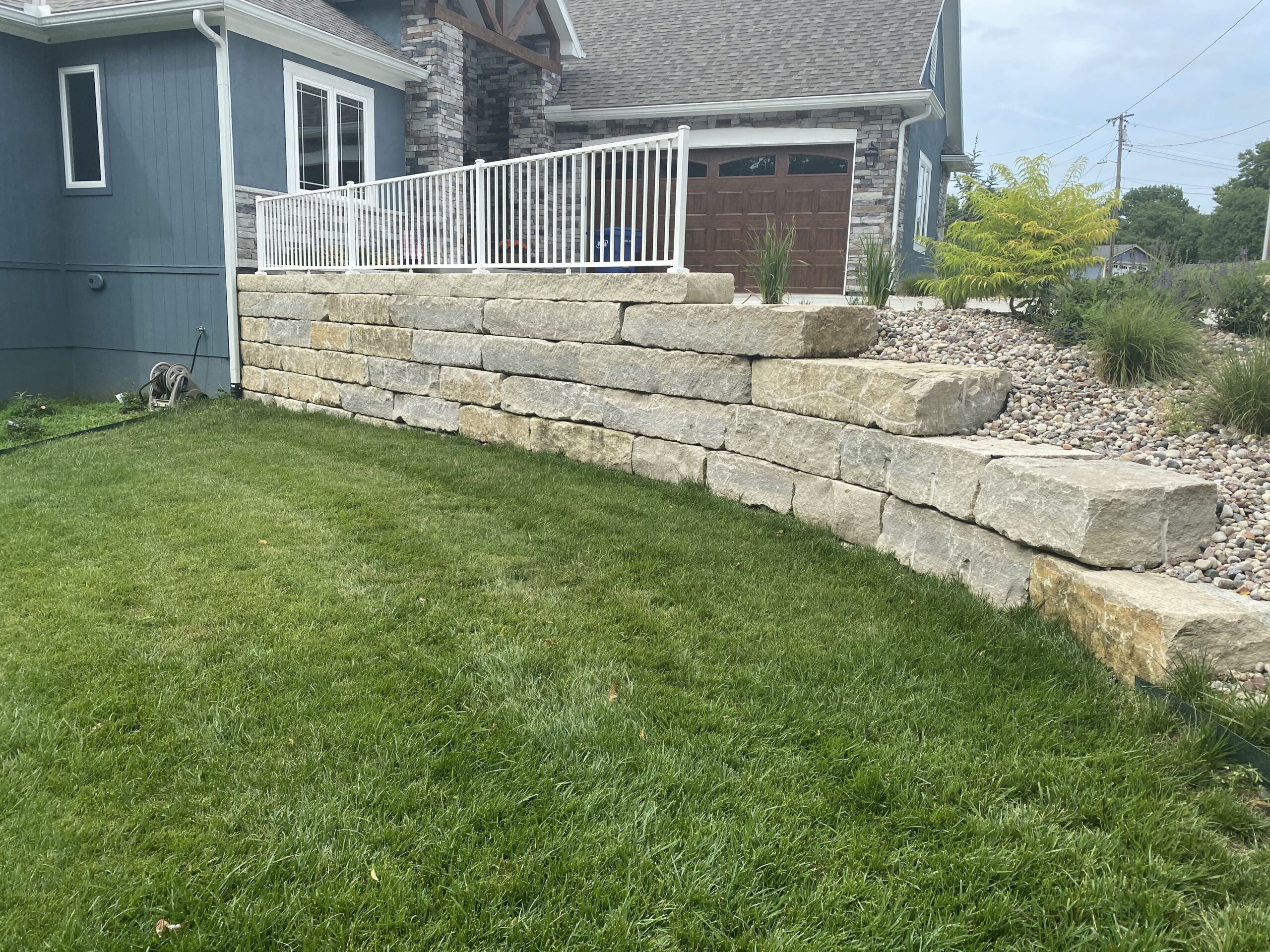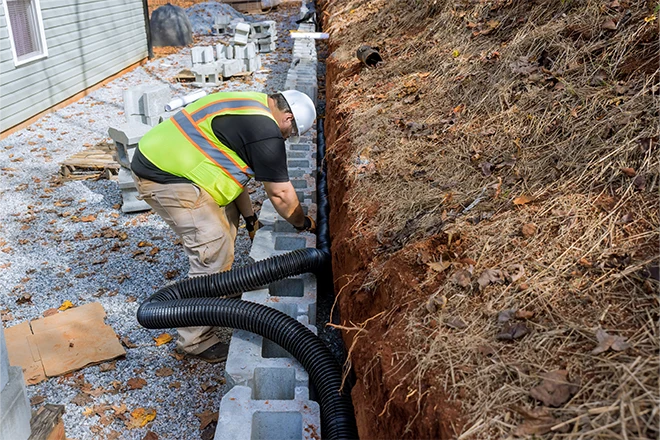The Best Material For Expanding Your Backyard
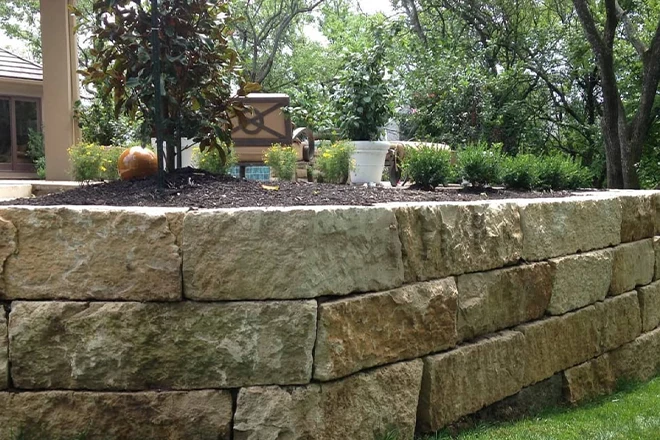
Ever looked at your backyard and thought, “What if I could make this space more functional and attractive?” Or perhaps you’ve wondered, “How can I prevent soil erosion in my sloping garden?”
This blog post is all about retaining wall materials, their pros and cons, and how they can transform your outdoor living space.
By the end of this post, you’ll have a solid understanding of the best materials for your retaining wall project and the primary benefits of each. Then you’ll need to know the different types of retaining walls.
Gradex Company’s Thoughts On Retaining Wall Materials
“I strongly discourage anyone from using any small paver block or wood product for your retaining wall. The small block like the 4”-by-8” is not made for retaining wall projects. Wood is definitely a cheap way to go, however, the short lifespan and lack of stability over time will offset any financial benefit of the savings upfront.”
– Bob Kerr, Owner of Gradex Company
Concrete Retaining Wall Blocks Pros And Cons:

Pros
Affordable: Concrete retaining wall blocks are a cost-effective choice for retaining walls. They offer a balance between price and performance, making them a popular choice for many homeowners.
Versatile in Shape and Size: With these stone landscape wall blocks, you can create elegant curves and unique designs. They come in various shapes and sizes, allowing for a wide range of design styles and possibilities.
Color Variety: From gray to tan to pale red, concrete retaining wall blocks offer a spectrum of colors to match your landscape design.
Multiple Stacking Methods: Whether it’s a solid stack, hollow blocks, pin system, or lip system, concrete retaining wall blocks provide numerous stacking options.
Highly Durable: With a lifespan of up to 100 years, concrete retaining wall blocks are built to last.
Low Maintenance: These retaining wall blocks require minimal upkeep, saving you time and effort in the long run. If you know how to clean retaining wall blocks, you’re good to go!
Quick Installation: With the right tools and expertise, a contractor can install a stone retaining wall swiftly and efficiently.
Cons
Height Limitations: Concrete blocks are generally not recommended for walls higher than four feet due to stability concerns.
Requires Proper Support and Drainage: To prevent water damage and ensure structural integrity, concrete blocks require a well-designed support and drainage system.
Difficult and Costly to Remove: If you ever decide to remove or replace your concrete block retaining wall, be prepared for a challenging and potentially expensive process.
Aesthetics: While functional, concrete blocks may not be the most visually appealing option compared to other materials.
Not Really a DIY Project: Installing a concrete block retaining wall requires a certain level of skill and expertise, making it less suitable for DIY enthusiasts.
*We prefer installing stone retaining walls for our clients in Kansas City, MO. Stone is the best retaining wall material because it’s reliable, durable, and beautiful.
Stone Veneer Pros And Cons:

Pros
Aesthetically Pleasing: Stone veneer offers landscape walls a natural and attractive look, enhancing the beauty of your outdoor space. They don’t have the same look as real stone retaining wall projects, though,
Durable and Long-lasting: Stone veneer is resistant to weathering and can last for many years with minimal maintenance.
Few Limitations on Height and Thickness: With stone veneer, you can build a retaining wall of almost any height and thickness, providing greater flexibility in design.
Cons
Professional Installation Required: Stone veneer installation requires professional skills and tools, which may increase the overall cost of your retaining wall.
Higher Cost: Compared to other materials, stone veneers can be more expensive due to their durability and aesthetic appeal.
Bricks Pros And Cons:
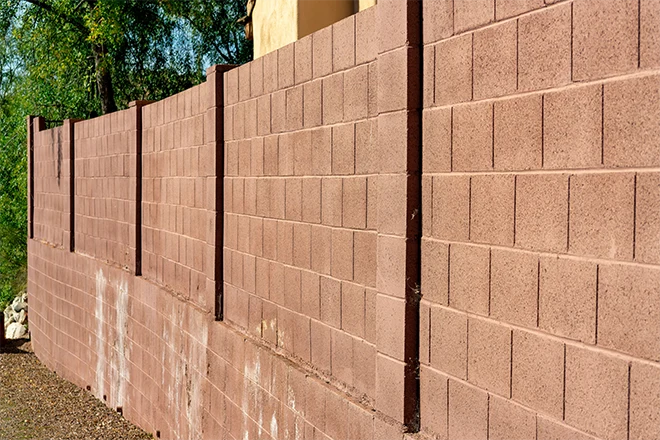
Pros
Common Building Material: Bricks are a traditional building material that complements most houses and landscapes.
Durable and Weather-resistant: Bricks can withstand various weather conditions and maintain their appearance over time.
Relatively Simple to Install: With some basic masonry skills, you can install a brick retaining wall yourself.
Cons
Foundation Installation Requires Care: To ensure the stability of your brick retaining wall, the foundation must be properly installed, which can be a meticulous process.
Replacing Damaged Bricks Can Be Challenging: If a brick cracks or gets damaged, replacing it can be a tricky task that requires careful removal of the damaged brick and installation of the new one.
Wood Pros And Cons:
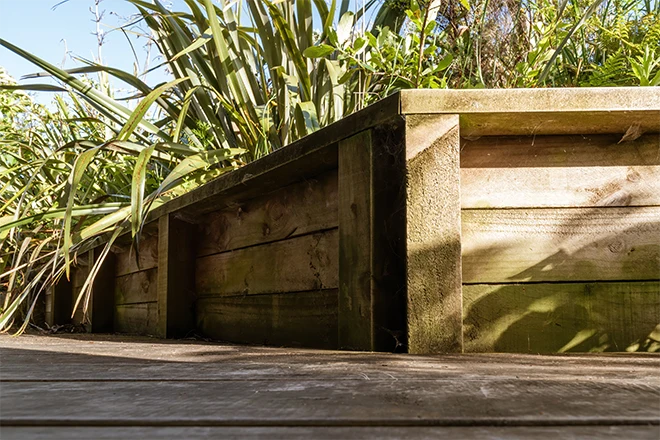
Pros
Beautiful and Organic Look: Wood provides a natural and warm aesthetic to retaining walls, making your outdoor space feel more inviting.
Easy to Work With: Wood is a versatile material that’s relatively easy to cut and shape, making it a popular choice for DIY projects.
Thick Timber Offers Strength and Durability: Thick timber can withstand significant pressure, making it a sturdy choice for retaining walls.
Cons
Limited Shelf-life: Unlike stone or concrete, wood is prone to rotting over time, especially in damp conditions.
Susceptible to Termite Infestation: Wood retaining walls can attract termites, which can cause significant damage if not addressed promptly.
Limited Design Flexibility: Unless you have advanced woodworking skills, the designs you can achieve with wood are somewhat limited.
Wood Ties Pros And Cons:
Pros
Cost-effective Option: Wood ties are a budget-friendly choice for retaining walls, making them a popular choice for homeowners on a tight budget.
Easy Installation: With some basic carpentry skills, you can install a wood tie retaining wall yourself.
Aesthetically Pleasing: Wood ties offer a rustic and charming look that can enhance the beauty of your outdoor space.
Cons
Wood Rot Over Time: Like other wood materials, wood ties can rot over time, especially in damp conditions.
Limited Suitability for Complex Projects: Wood ties are best suited for simple, small-scale projects. For larger or more complex retaining walls, other materials may be more appropriate.
Eventual Replacement May Be Necessary: Due to their susceptibility to rot and termite infestation, wood ties may need to be replaced over time.
Poured Concrete Pros And Cons:
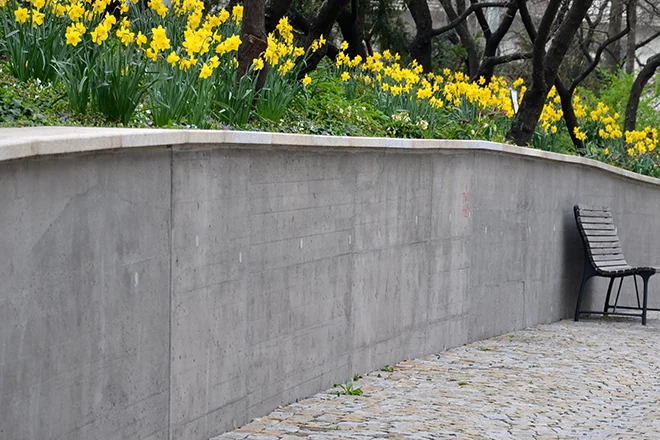
Pros
Modern and Sleek Appearance: Poured concrete offers a clean, modern look that can complement contemporary landscape designs.
Allows for Unique Structures and Shapes: With poured concrete, you can create unique structures and shapes that are difficult to achieve with other materials.
Highly Durable: Poured concrete is resistant to weathering and can last for many years with minimal maintenance.
Easy to Install Drainage: With poured concrete, it’s relatively easy to incorporate a drainage system into your retaining wall design.
Quick Installation: With the right tools and expertise, a poured concrete retaining wall can be installed swiftly and efficiently.
Cons
Requires Professional Skill and Expertise: Poured concrete installation requires professional skills and tools, which may increase the overall cost of your project.
Susceptible to Cracking and Staining: Over time, poured concrete can develop cracks and stains, which can affect the appearance and integrity of your retaining wall.
Boulders Pros And Cons:

Pros
Rustic and Natural Look: Boulders offer a rugged and natural aesthetic and architectural style that can enhance the beauty of your outdoor space.
Long-lasting: Boulders can withstand the test of time and weathering, making them a durable choice for retaining walls.
DIY-friendly Installation: With some basic landscaping skills, you can install a boulder retaining wall yourself by stacking the boulders.
Cons
Limited Design Flexibility: Boulders offer limited flexibility in design and shape, which may restrict your creative options.
Inefficient in Directing Water Flow: Boulders are not the best choice for retaining walls in areas with significant water flow, as they can be inefficient in directing the water.
Heavy and May Require Additional Support: Boulders are heavy and may require additional support to ensure the stability of your retaining wall.
Gabion Pros And Cons:
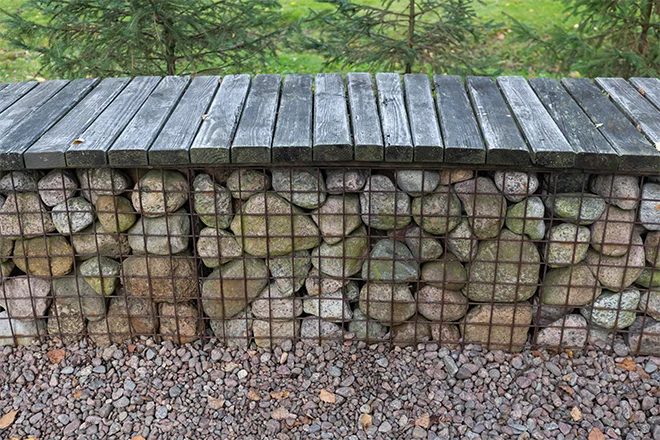
Pros
Long-lasting and Durable: Gabions are made of wire or steel rod cages filled with rocks, making them a durable choice for retaining garden walls too.
Easy Installation: Installing a gabion retaining wall is relatively straightforward. You simply fill the cage with rocks and gravel and stack them as needed.
Cons
Height Limitations: Like concrete blocks, gabions are generally not recommended for walls higher than four feet due to stability concerns.
Requires Proper Support and Drainage: To prevent damage and ensure structural integrity, gabions require a well-designed support and drainage system.
Difficult and Costly to Remove: If you ever decide to remove or replace your gabion retaining wall, be prepared for a challenging and potentially expensive process.
Now you may want to know what type of retaining wall is best for your project.
Transform Your Backyard With Gradex Company
Now that you’re equipped with the knowledge of various retaining wall block materials and their pros and cons, you’re one step closer to transforming your backyard into a functional and attractive outdoor space.
At Gradex Company, we specialize in installing high-quality retaining walls in Kansas City, MO. Our crew of experts can help you select the best material for your project and guarantee a smooth and efficient installation process.
So why wait? Start transforming your backyard today by filling out our contact form or giving us a call. We can’t wait to help you build the backyard of your dreams!
